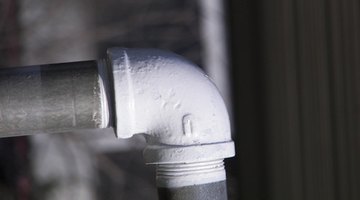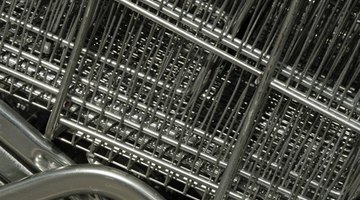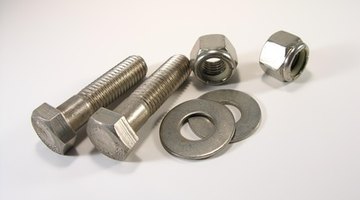The Difference Between Cast Iron & Forged Steel Fitting
Both cast iron and forged steel fittings are essential parts of commercial buildings and houses. They connect pipes in buildings, including lavatory fixtures, showers, drainage pipes and waste-water pipes. Car and aviation industries also use them for making cars, trains, buses and airplanes. If your home-improvement project involves replacing fittings, you will want to know which type of fitting is suitable for each replacement.
Cast Iron


Cast iron is a mixture of iron, 2 to 4 percent carbon and other metals including manganese and silicon and small amounts of phosphorus and sulfur. Casting iron involves melting the iron and pouring it into a mold to create the desired shape.
Forged Steel

To make forged steel, a blacksmith heats the steel until it is malleable and then presses, pounds or bends the steel into a desired shape. The forging process creates a stronger steel that can withstand higher pressure. It lasts longer than unforged steel and is more resistant to permanent deformation.
Feature Comparison

Both cast iron fittings and forged steel fittings are durable. Cast iron rusts more than steel and is not suitable to use for pipes that deliver drinking water. Forged steel is more resistant to fatigue and lasts longer than cast iron. Due to the abundance of iron, cast iron is cheaper to produce than forged steel, which requires a mix of more precious metals. Cast iron fittings are more versatile and come in a wider range of shapes, while forged steel fittings come only in limited designs.
Other Uses

Aside from fittings, there are many uses for cast iron and forged steel. Examples of cast iron and forged steel products are flanges, threads, pipes and bars. The furniture industry utilizes cast iron and forged steel for making chairs, tables and accessories. Cast iron is popular for making decorative railings, gates and fireplaces.The construction industry uses forged steel to build bridges, utility poles and train tracks because of its durability and higher fatigue tolerance.
References
Writer Bio
Hope has been writing for over 10 years. She has written articles in various topics including marketing, health and beauty, fashion and travel and worked with clients from Australia, America and the UK. Hope graduated with a bachelor's degree in nursing from the University of St. La Salle.
Photo Credits
- pipe fitting image by Joann Cooper from Fotolia.com
- cast iron pipe image by jimcox40 from Fotolia.com
- steel carts image by Steve Mann from Fotolia.com
- stainless steel image by Tom Oliveira from Fotolia.com
- steel bridge image by robert sbarra from Fotolia.com
More Articles



